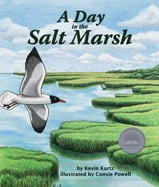Alignment to Standards for VA

| Grade | Number | Standard |
|---|---|---|
| 1 | SC-1.4a | plants characteristics. Key concepts include needs (food, air, water, light, and a place to grow); |
| 1 | SC-1.5b | animal characteristics:body coverings, body shape, appendages, and methods of movement) |
| 1 | SC-1.5c | animal characteristics. Key concepts include other characteristics (wild/tame, water homes/land homes). |
| 1 | SC-1.8a | natural resources Key concepts include identification of natural resources (plants and animals, water, air, land, minerals, forests, and soil); |
| 1 | SC-1.8b | natural resources Key concepts include factors that affect air and water quality |
| 2 | GEO-2.4c | comparing the climate, land, and plant life of these regions; |
| 2 | SC-2.5a | living things are part of a system. Key concepts include living organisms are interdependent with their living and nonliving surroundings; and |
| 2 | SC-2.5b | living things are part of a system. Key concepts include habitats change over time due to many influences. |
| 2 | SC-2.8a | Plants importance Key concepts include important plant products (fiber, cotton, oil, spices, lumber, rubber, medicines, and paper); |
| 2 | SC-2.8c | Plants importance Key concepts include plants provide homes and food for many animals and prevent soil from washing away. |
| 3 | SC-3.10a | Key concepts include the interdependency of plants and animals; |
| 3 | SC-3.11c | sources of energy. Key concepts include fossil fuels (coal, oil, natural gas) and wood; and |
| 3 | SC-3.11d | sources of energy. Key concepts include renewable and nonrenewable energy resources. |
| 3 | SC-3.4a | animal adaptations: methods of gathering and storing food, finding shelter, defending themselves, and rearing young; |
| 3 | SC-3.4b | animal adaptations: hibernation, migration, camouflage, mimicry, instinct, and learned behavior. |
| 3 | SC-3.5b | food chains. Key concepts include herbivore, carnivore, omnivore |
| 3 | SC-3.6a | environments Key concepts include water-related environments (pond, marshland, swamp, stream, river, and ocean environments); |
| 3 | SC-3.6c | environments Key concepts include population and community. |
| 3 | SC-3.8a | Key concepts include patterns of natural events (day and night, seasonal changes, phases of the moon, and tides); and |
| 4 | SC-4.5a | plants and animals in an ecosystem Key concepts include behavioral and structural adaptations; |
| 4 | SC-4.5b | plants and animals in an ecosystem Key concepts include organization of communities; |
| 4 | SC-4.5d | Key concepts include habitats and niches; |
| 4 | SC-4.8a | Virginia natural resources. Key concepts includewatershed and water resources; |
| 4 | SC-4.8b | Virginia natural resources. Key concepts include animals and plants; |
| 5 | SC-5.6a | ocean environment. Key concepts include geological characteristics (continental shelf, slope, rise); |
| 5 | SC-5.6b | ocean environment. Key concepts include physical characteristics (depth, salinity, major currents); and |
| 5 | SC-5.6c | ocean environment. Key concepts include biological characteristics (ecosystems). |
| K | GEO-K.4b | locate land and water features. |
| K | MA-K.9 | tell time to the hour, using an analog or digital clock. |
| K | SC-K.5b | Key concepts include the natural flow of water is downhill; |
| K | SC-K.8a | simple patterns in daily life. Key concepts include weather observations; |
| K | SC-K.9a | change over time Key concepts include natural and human-made things may change over time |
| K | SC-K.9b | change over time Key concepts include changes can be noted and measured. |